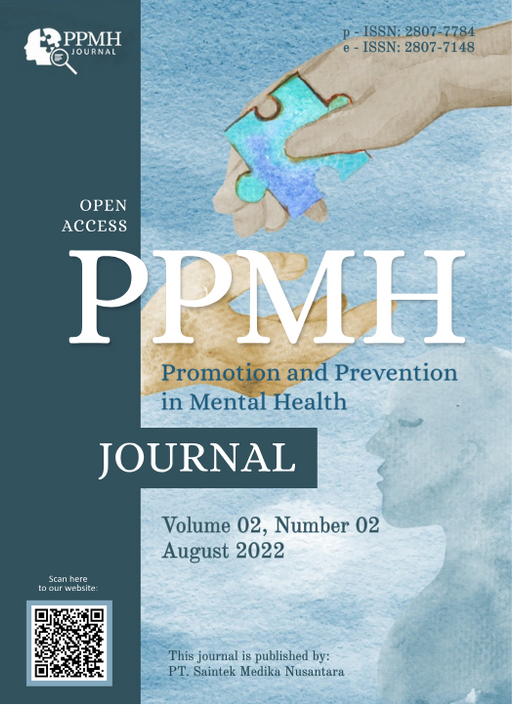Abstract
Patient safety in hospitals is a form of guarantee that care for patients becomes safer. Patient Safety Goal accreditation standards are the main thing that must be done, especially by health workers who work in hospitals, because they are closely related and will affect the quality of service in hospitals. Preliminary studies show that nurses' knowledge and compliance with implementing patient safety target standards still need to be improved. This study aimed to determine nurses' knowledge of implementing compliance with Patient Safety Goal standards according to STARKES 2022. This research design is a correlation analytic with a cross-sectional approach. The population was all nurses at the Jombang Hospital Inpatient Installation, totaling 184 respondents. The sample in this study amounted to 126 respondents, obtained through the probability sampling technique (proportionate stratified random sampling). Measuring instruments in the form of questionnaires and observation sheets. The Spearman Rho test analyzed data with p-value <α (0.05). The results showed a relationship between the level of knowledge and compliance with implementing patient safety target standards with a p-value of 0.000 <0.5, where the correlation level was 0.466. The higher the nurse's knowledge, the higher the nurse's compliance in implementing patient safety target standards.
References
Alimul Hidayat A.A., (2010). Metode Penelitian Kesehatan Paradigma Kuantitatif, Heath Books. Jakarta
Alligood. (2017). Pakar Teori Keperawatan Dan Karya Mereka. Elsevier: Singapore
Al-Assaf, A.F (2009). Mutu Pelayanan Kesehatan : Perspektif Internasional. Sagung Seto. Jakarta
Arikunto, S. (2013). Prosedur Penelitian Suatu Pendekatan Praktik. Edisi Revisi. PT. Rineka Cipta. Jakarta
Arikunto, S (2006). Prosedur Penelitian Suatu Pendekatan Praktik. Rineka Cipta. Jakarta
Azwar, Azrul, 1996, Menjaga Mutu Pelayanan Kesehatan, Pustaka Sinar Harapan. Jakarta
Depkes RI. (2006). Panduan Nasional Keselamatan Pasien Rumah Sakit. Depkes RI. Jakarta
Donsu, Jenita DT. (2017). Psikologi Keperawatan. Pustaka Baru Press. Yogyakarta
Elizabeth, Hurlock. (1998). Perkembangan Anak Jilid I. Erlangga. Jakarta
Emaliyawati (2010). Tindakan Kewaspadaan Universal sebagai Upaya Mengurangi Resiko Penyebaran Infeksi. FIK Universitas Padjajaran. Bandung
Hadi, Irwan (2017). Buku Ajar Keselamatan Pasien. Deepublish. Yogyakarta
Insani, Tria Harsiwi Nurul. Sri Sundari. (2018). Analisis Pelaksanaan Keselamatan Pasien Oleh Perawat. Journal Of Health Studies, 2 (1), 84-95.
Neri, Reno Afriza ( 2017). Analisis Pelaksanaan Sasaran Keselamatan Pasien Di Rawat Inap Rumah Sakit Umum Daerah Padang Pariaman. https://doi.org/10.25077/jka.v7i0.921
Larasati, Andriyani . Inge Damanti (2021). Implementasi Sasaran Keselamatan Pasien di Rumah Sakit di Indonesia. FKM Universitas Airlangga. Surabaya
Joint Commission International. (2013). Joint Commission International Acredditation Standards for Hospital.
Kemenkes RI. (2014). Profil Kesehatan Indonesia Tahun 2014. Kementerian Kesehatan RI. Jakarta
Kemenkes RI. (2017). Peraturan Menteri Kesehatan Republik Indonesia Nomor 11 Tahun 2017 Tentang Keselamatan Pasien. Kemenkes RI. Jakarta
Kemenkes RI. (2022). Buku Standar Akreditasi Rumah Sakit. Kemenkes RI. Jakarta
Notoatmodjo, S., (2014), Promosi Kesehatan dan Perilaku Kesehatan. Rineka Cipta. Jakarta
Nursalam.(2011). Proses dan Dokumentasi Keperawatan, Konsep dan Praktek. Salemba Medika. Jakarta
Nursalam (2003). Konsep dan Penerapan Metodologi Penelitian Ilmu Keperawatan Pedoman Skripsi, Tesis dan Instrumen Penelitian Keperawatan. Salemba Medika. Jakarta
Wardhani, Viera. (2017) Buku Ajar Manajemen Keselamatan Pasien. UB Press. Malang
